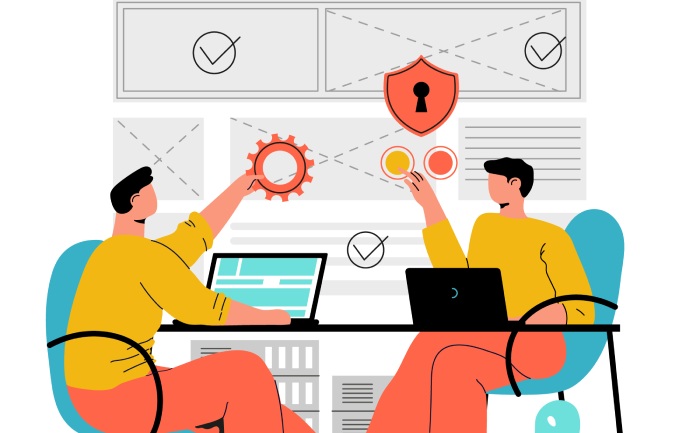The medical world has been one of the domains that have seen unprecedented advancement. Medical science has advanced over the years, and life expectancy has improved vastly. However, all is not well with the healthcare sector. Phishing and cyber-attacks on its systems have been relentless and mostly successful.
Numerous instances of system disruption and loss of records have been reported from around the world. For example, one victim from last year was Montana-based Kalispell Regional Healthcare, which stated that the breached data has led to the disclosure of 140,000 patients’ information. The phishing attacks happened over three months.
Why Are Healthcare Facilities The Prime Target?
At first glance, it may be stupefying to learn that healthcare facilities could be targets of phishing. However, there are enough reasons for it as described below.
Healthcare Facilities Lack The Necessary IT Security Infrastructure
While hospitals and healthcare facilities may have the latest equipment and technology to cure a disease, the IT Security Department is among the most neglected units. There is hardly any substantial effort in fortifying the internal systems to prevent phishing attacks in many facilities. While most of their effort is to leverage medical technology and deliver better care, phishing protection gets less importance, leaving little or no focus on creating firewalls to safeguard data.
Enormous Data And An Increasing Pile
A healthcare facility is where an enormous amount of data can be found at any point in time. From patient healthcare details to medical billing data and financial information, any healthcare facility is a goldmine of data. Phishing exercises are focused on obtaining this information for nefarious usage. While more extensive facilities may have the budget to implement robust security solutions, the smaller ones may not have the wherewithal to thwart a severe challenge.
Employees On Perpetual Rotation
The most basic phishing prevention method is awareness. It is done through organizational awareness programs and staff training. However, healthcare facilities see many staff joining and leaving continually. And given a large number of patients, they are usually overwhelmed. Hence, anti-phishing training stops becoming a priority as staff never gets to settle down in most healthcare facilities. Therefore, assisted programs that educate staff on phishing attack prevention are absent. Newer recruits fresh out of graduate college may not even understand the nuances and subtleties that malicious actors employ to hoodwink employees. The healthcare sector must empower their staff with phishing prevention tips, which will help the facility with adequate awareness to stop spear phishing and other cyber-threats.
Measures Of Protection From Phishing Attacks
With advancements in technology, medical practitioners have had access to some of the most sophisticated tools to cure diseases. However, not much has been done for phishing email prevention. Here are some measures that must be seriously considered for protection from phishing attacks in the healthcare sector.
Increasing The Budget
Money is perhaps the most significant deciding factor in cybersecurity. The healthcare sector ends up spending a considerable amount of money on medical systems and has scant regard for anything related to IT Security. The result is that 40% of facilities spend no more than 1 to 2% of the annual budget on providers of anti-phishing services while 8% spend nothing at all.
This lack of cybersecurity and the fact that healthcare records fetch a lot of money on the dark web have led phishing agents to target the sector. Hence, the only way to counter them is to increase spending to get hold of the best anti-phishing software and fortify the network.
Educating And Creating Awareness Among Staff
Phishing prevention best practices suggest that the weakest link in any organization is its people. Social engineering experts rely on human curiosity and emotions to garner information. It is one reason why phishing still exists in the first place. Phishing emails play on the users’ state of mind and lure them into believing that something new and exciting is in the offing. Such malicious emails have fake URLs that direct the user to counterfeit pages where personal or financial information would be extracted.
To prevent the staff from falling into such traps, the organization needs to regularly update their training manual and educate them about the dangers of such activities. Protection against phishing begins by turning the weakest link into strength.
Maintaining Vigilance
Besides email phishing prevention, one also needs to be vigilant enough to stop phishing through other channels. It can sometimes happen over the phone. Fraud calls tend to create panic and fear among an individual and compel them to act irrationally. One of the other areas of focus is spear phishing protection. CEOs, CTOs, and CFOs, are at significant risk here, and there should be enough obstacles to prevent fraudsters from reaching them.
Leveraging Technology
State-of-the-art technological solutions must be implemented with the funds set aside by the healthcare facility for anti-phishing protection. A thorough review must be conducted to find the best anti-phishing tools. Also, the primary responsibility of thwarting phishing attempts must be handed over to a hired anti-phishing services agency, which has expertise in the subject and can handle the project efficiently.
Final Words
Phishing prevention is one of the essential tasks of every organization, more so for the healthcare sector. They are responsible for the safekeeping of confidential patient information, and any data breach will have significant consequences. Hence, it is imperative that information flow is regulated and access control is established, besides educating the staff. The best possible methods are to be implemented to counter phishing attempts and win the battle against malicious threats.



